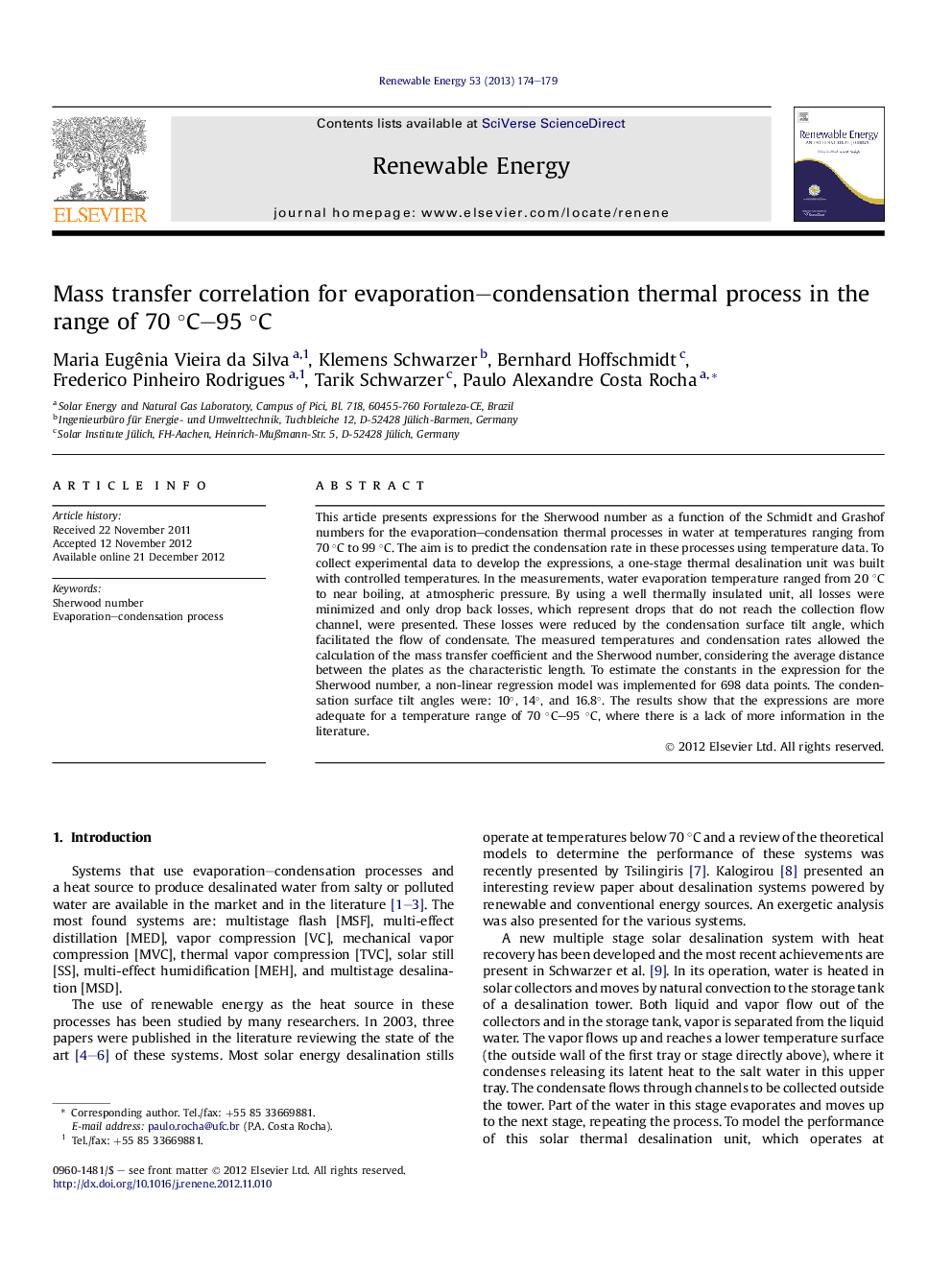| Article ID | Journal | Published Year | Pages | File Type |
|---|---|---|---|---|
| 300502 | Renewable Energy | 2013 | 6 Pages |
This article presents expressions for the Sherwood number as a function of the Schmidt and Grashof numbers for the evaporation–condensation thermal processes in water at temperatures ranging from 70 °C to 99 °C. The aim is to predict the condensation rate in these processes using temperature data. To collect experimental data to develop the expressions, a one-stage thermal desalination unit was built with controlled temperatures. In the measurements, water evaporation temperature ranged from 20 °C to near boiling, at atmospheric pressure. By using a well thermally insulated unit, all losses were minimized and only drop back losses, which represent drops that do not reach the collection flow channel, were presented. These losses were reduced by the condensation surface tilt angle, which facilitated the flow of condensate. The measured temperatures and condensation rates allowed the calculation of the mass transfer coefficient and the Sherwood number, considering the average distance between the plates as the characteristic length. To estimate the constants in the expression for the Sherwood number, a non-linear regression model was implemented for 698 data points. The condensation surface tilt angles were: 10°, 14°, and 16.8°. The results show that the expressions are more adequate for a temperature range of 70 °C–95 °C, where there is a lack of more information in the literature.
► The Sherwood number as function of the Schmidt and Grashof numbers are presented. ► The evaporation–condensation thermal processes in water were considered. ► To collect experimental data a one stage thermal desalination unit was built. ► The mass transfer coefficient and the Sherwood number were calculated. ► The expressions obtained are more adequate for a temperature range of 70 °C–95 °C.
